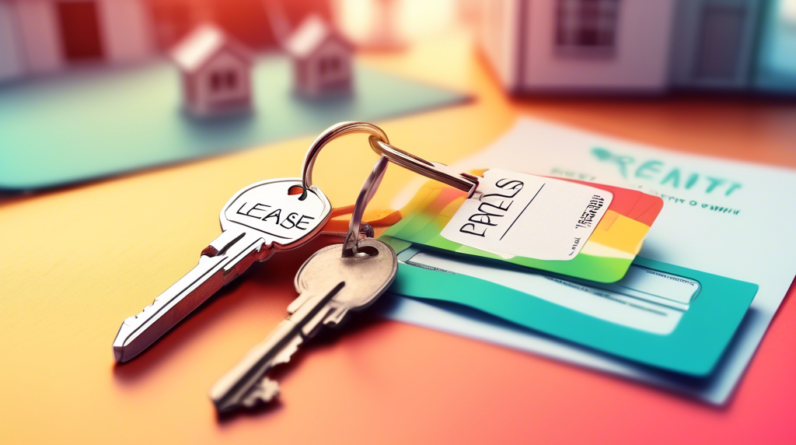
Rent-to-Own vs. Mortgage: Pre-Approval Requirements
Understanding Rent-to-Own Financing
Rent-to-own, also known as lease-option or lease-purchase, offers a unique path to homeownership, especially for those who aren’t immediately ready to secure a traditional mortgage. In a rent-to-own agreement, a portion of your monthly rent payments contributes towards the eventual purchase of the property. It’s essentially a hybrid model combining renting and homeownership.
How Rent-to-Own Works
The process typically unfolds in two major stages:
- Option Agreement: You and the seller agree on a purchase price for the property and an option fee, which grants you the exclusive right to buy the house during a specified period. This fee is often credited towards the down payment.
- Lease Agreement: Simultaneously, you enter into a lease agreement, outlining the monthly rent and the duration. A portion of your rent, as agreed upon, goes into a special escrow account, accumulating as your potential down payment.
Pre-Approval Requirements for Rent-to-Own
While rent-to-own agreements don’t involve a traditional mortgage lender, understanding the pre-approval aspects is crucial:
1. Credit Check and History
Your credit history paints a picture of your financial responsibility. While the scrutiny might be less stringent compared to mortgage applications, sellers still want reassurance of your ability to manage payments. They might conduct credit checks to assess your financial track record, looking for a history of timely payments and a manageable debt load.
2. Income Verification
Just as with a mortgage, demonstrating a stable income is essential. Sellers need to be confident in your ability to make consistent rent payments, a portion of which contributes to your future purchase. Expect to provide income proof through pay stubs, tax returns, or bank statements.
3. Down Payment (Option Fee)
The option fee, a unique aspect of rent-to-own, secures your right to purchase the property. Think of it as a deposit showcasing your commitment. The amount varies based on factors like the property’s value and market conditions, often ranging from 1% to 5% of the agreed-upon purchase price.
4. Rent-to-Own Agreement Review
Thoroughly review the rent-to-own contract with legal counsel. Ensure you fully understand the terms related to the purchase price, the portion of rent allocated towards the purchase, maintenance responsibilities, and potential exit clauses. This step is crucial to avoid future disputes and safeguard your interests.
Understanding Mortgage Pre-Approval
A mortgage pre-approval is a lender’s written commitment to loan you a specific amount for a home purchase. It’s a powerful tool that demonstrates your seriousness as a buyer and streamlines the home search process.
How Mortgage Pre-Approval Works
Securing a pre-approval involves a thorough assessment of your financial situation by the lender:
- Application: You provide the lender with detailed financial information, including income, assets, debts, and credit history. This allows them to evaluate your borrowing capacity.
- Review and Verification: The lender meticulously reviews your financial documents, verifying the accuracy of the information provided. They might also pull your credit report to assess your creditworthiness.
- Pre-Approval Decision: Based on their evaluation, the lender provides a pre-approval letter stating the loan amount you qualify for, interest rate estimates, and any applicable loan terms.
Pre-Approval Requirements for a Mortgage
To get pre-approved for a mortgage, be prepared to meet these requirements:
1. Credit Score and History
Lenders perceive a good credit score as an indicator of responsible financial behavior. It significantly impacts your interest rate and loan terms. Aim for a FICO score of 620 or higher, though higher scores generally lead to better loan offers. Lenders will also scrutinize your credit report for any red flags, such as late payments or collections.
2. Debt-to-Income Ratio (DTI)
Your DTI reflects the percentage of your gross monthly income dedicated to debt payments. Lenders use this ratio to gauge your ability to repay the mortgage. Aim for a DTI of 43% or lower, signifying a healthy balance between debt and income. Lowering your DTI might involve reducing debt or increasing your income.
3. Employment History and Income Verification
Lenders need assurance of your employment stability and income consistency to approve a mortgage. Be prepared to furnish recent pay stubs, W-2 forms, or tax returns as proof of income. If you’re self-employed or have irregular income, providing additional documentation, such as profit and loss statements or bank statements, might be necessary.
4. Down Payment Funds
Saving for a down payment is often the most significant hurdle for homebuyers. The down payment amount impacts your loan size, interest rate, and the need for private mortgage insurance (PMI). Conventionally, a 20% down payment is ideal to avoid PMI, but many loan programs accommodate lower down payments, sometimes as low as 3% or even 0% for eligible borrowers. Demonstrating sufficient funds for the down payment and closing costs is essential during pre-approval.
Rent-to-Own vs. Mortgage: Which Path is Right for You?
Choosing between rent-to-own and a traditional mortgage hinges on your individual circumstances and financial readiness:
When Rent-to-Own Might Be Favorable
- Time to Improve Credit: If your credit score needs a boost to qualify for a mortgage, rent-to-own provides time to build a positive credit history.
- Down Payment Flexibility: The gradual nature of building equity through rent credits can be appealing if saving a lump sum down payment is challenging.
- Testing the Neighborhood: Rent-to-own allows you to experience the neighborhood and property before committing to a long-term purchase.
When a Mortgage Might Be the Better Option
- Building Equity: Mortgages allow you to start building equity in your home from day one, unlike rent-to-own where a portion of your payment goes towards rent.
- Tax Benefits: Homeownership often comes with tax deductions for mortgage interest and property taxes, potentially offering significant savings.
- Market Appreciation: In a rising market, owning a home allows you to benefit from potential property value appreciation, while renters don’t share this advantage.
Conclusion
Both rent-to-own and traditional mortgages offer pathways to homeownership, each with its own set of advantages and considerations. Rent-to-own can bridge the gap for those who aren’t immediately ready for a mortgage, offering flexibility and a path to build credit. However, mortgages often provide faster equity building, potential tax benefits, and the opportunity to benefit from market appreciation.
Carefully assess your financial situation, weigh the pros and cons of each option, and consult with a financial advisor to determine the most suitable path for your homeownership journey.







